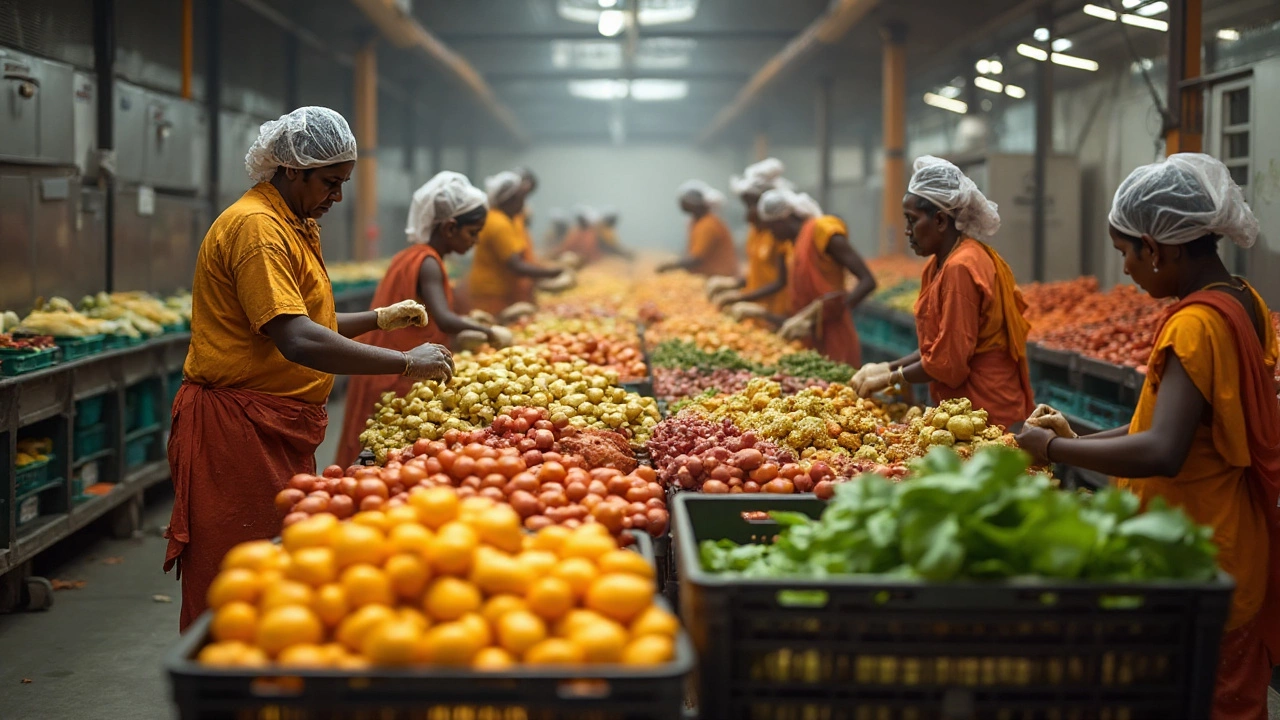- Discovering the Priciest Wood for Indian Furniture Feb 3, 2025
- Booming Small-Scale Manufacturing Businesses in 2024 Feb 17, 2025
- What Plastic Pollutes the Ocean the Most? Apr 13, 2025
- Top Profitable Food Processing Business Ideas Nov 24, 2024
- Is Mercedes Owned by Tata? Clearing Up the Confusion May 18, 2025
Food Processing Fields: What They Are and Why They Matter
Ever walked into a supermarket and wondered how fresh fruit becomes jam or why a slice of cheese can sit on a shelf for months? That’s the magic of food processing fields – the collection of methods, machines, and expertise that turn raw ingredients into the foods we eat every day. Understanding these fields helps you spot trends, choose the right partners, and keep your business competitive.
Main Segments in Food Processing
Food processing isn’t one monolithic activity. It breaks down into several key segments, each with its own tech and market drivers:
- Preservation: Freezing, canning, drying, and pasteurization extend shelf life and keep foods safe.
- Transformation: Milling, grinding, extrusion, and fermentation turn raw materials into powders, doughs, or beverages.
- Packaging: Vacuum sealing, modified‑atmosphere packaging, and smart tags protect products and convey information.
- Value‑Added Ingredients: Enzymes, flavors, and fortified blends enhance nutrition or taste.
- Ready‑to‑Eat (RTE) Meals: Heat‑stable, microwaveable, and snack foods cater to busy lifestyles.
In India, the dairy, confectionery, and spice sectors lead the pack, while the snack‑and‑beverage market is exploding thanks to rising disposable incomes.
Future Trends & How to Stay Ahead
Technology is reshaping food processing faster than ever. Here are three trends you should watch:
- Automation and AI: Robots handle repetitive tasks, while AI predicts demand, reduces waste, and optimizes line speeds.
- Sustainable Practices: Consumers demand lower carbon footprints, so low‑water processing, renewable energy, and biodegradable packaging are becoming must‑haves.
- Personalized Nutrition: Data‑driven formulations let manufacturers create products tailored to individual health needs, opening new premium segments.
To keep up, start with a quick audit of your current processes. Identify bottlenecks, measure waste, and ask yourself if any step could benefit from a smarter machine or a greener method. Small upgrades – like a variable‑speed mixer or a solar‑powered dryer – often yield big savings.
If you’re looking for a partner, choose a provider that combines deep industry knowledge with flexible engineering. Rise Corp India, for example, offers end‑to‑end solutions: from custom equipment design to on‑site installation and after‑sales support. Their focus on sustainable tech means you can boost output without blowing your carbon budget.
Finally, stay connected with industry news. Join forums, attend short webinars, and follow regulatory updates – especially around food safety standards and export requirements. A well‑informed team can turn a compliance change into a competitive edge.
In short, the food processing field is a mosaic of specialties, each offering its own chance to innovate. By mapping the segments, embracing automation, and committing to sustainability, you can turn today’s challenges into tomorrow’s growth opportunities.
Diverse Fields of Food Processing: Key Sectors and Innovations Explained
- Aarav Sekhar
- Aug 3, 2025
Explore every corner of food processing—preservation, dairy, beverages, frozen foods, meat, snacks, and cutting-edge tech. Get real-world insights and tips that actually matter.
